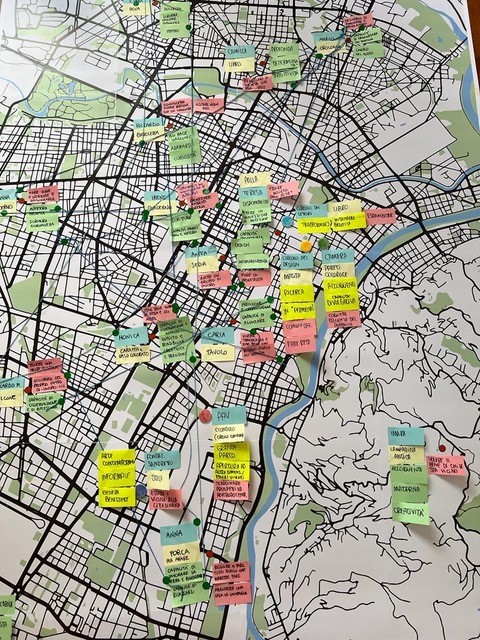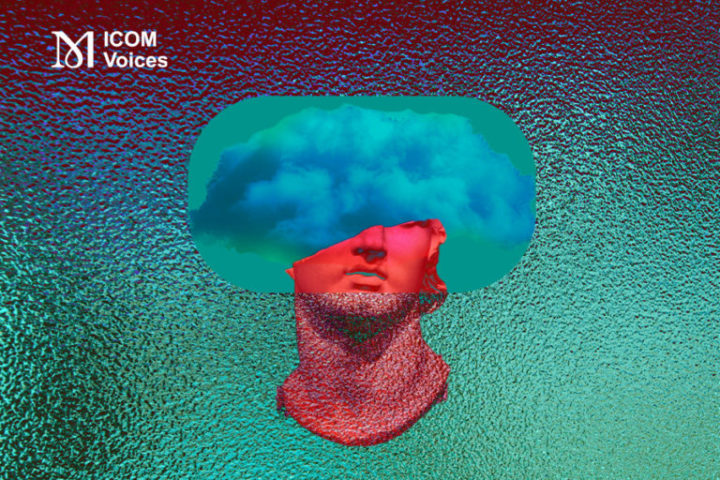
Giulia Mezzalama
Assistant Professor at the Politecnico di Torino, DIST (Italy), co-founder of MinD Mad in Design Association and Deputy Director of the Executive Master “Culture and Health” (CCW Cultural Welfare Center)
Museums have no borders,
they have a network
November 29, 2023
Keywords: mental health, well-being, museums, Italy.
In the last two decades, a growing body of evidence supporting the connection between museums and health has emerged, particularly demonstrating the role of art programmes in supporting mental health (Chatterjee and Camic, 2015). However, alongside the role of programs offered by museum institutions, it is interesting to explore how the museum environment, including its physical space, can impact the well-being of individuals. Which tangible and intangible spatial characteristics should museums consider to embrace a new idea of accessibility related to societal well-being? And ultimately which intersectoral strategies should they pursue to become key actors in social and health policies?
It is not coincidental that innovative experiences investigating the influence of cultural spaces on mental health emerged simultaneously with or following the pandemic. The Covid-19 pandemic had a profound impact redefining the relationship between museums and audiences, highlighting the vulnerability of this relationship.
In light of the international evidence presented in the 2019 WHO report titled ‘What is the evidence on the role of the arts in improving health and well-being?’ (Fancourt and Finn, 2019), in Italy, particularly in Piedmont, some pioneering projects have been initiated with the support of the Compagnia di San Paolo in Turin. These Italian projects aimed to evaluate not only the health benefits of artistic practices ― such as the DanzArte project, which translates emotional responses to art into physical movements through the use of multimodal and interactive technologies ― but also, more specifically, the connection between the quality of museum architectural spaces and the well-being experienced by visitors. In this article, I will present the Luoghi Comuni project, a multidisciplinary and participatory project developed by MinD Mad in Design, an association focused on improving young adults’ mental health through cultural activities.
Luoghi Comuni: museums as “everyday places” for vulnerable communities
The Luoghi Comuni (Common Places) project was created in response to a call for ideas with the aim of investigating how the tangible and intangible aspects of cultural spaces positively impact mental well-being. The project originated from the need to promote the social inclusion of individuals with mental health fragilities by encouraging their participation in museums and cultural institutions. It also arose from the need to raise awareness among cultural institutions regarding certain vulnerable groups which often face societal stigma.
The project was implemented through a series of participatory initiatives involving cultural institutions in the city of Turin, with a strong emphasis on the active engagement of individuals who have experience with mental health challenges. It was structured around a series of guided cultural visits, offering individuals with experiences of mental fragility – along with their family members and healthcare professionals who are interested in developing new approaches of care – an opportunity to step away from the often uninviting and poorly maintained locations where mental health services are provided, that can often cause self-stigmatisation.
The project aims to encourage them to more frequently engage with cultural venues known for their attention to detail and aesthetically pleasing venues, characterized by care and beauty. The visits thus become an opportunity to convey to patients the value generated by the sense of care for places and the beauty of architecture. They also provided an occasion for patients, their families, and healthcare professionals to question whether and how these places would be capable of making individuals with mental fragility feel comfortable and regularly welcoming them as part of their audience, to finally consider museums as ‘common places’. For this project, the cultural centers and museums were carefully selected for their diverse environmental and spatial characteristics: from institutional museums situated in enclosed buildings (Fondazione Sandretto Re Rebaudengo, Camera Centro Italiano per la Fotografia) to urban green spaces (PAV Parco Arte Vivente) to new open centers for youth socio-cultural aggregation (Off Topic). This approach allowed for the evaluation, measurement, and reporting of the level of well-being generated by the cultural experiences, leveraging collectively established tools, guidelines, and criteria.
Assessing museums’ inclusiveness through participatory activities
The project unfolded through a series of actions structured according to different levels of engagement aiming to foster social inclusion and cross-sectorial actions. An initial co-design workshop involved representatives from museums and cultural institutions, along with individuals experiencing mental health issues aiming to delve into the concept of a ‘gentle place’. This was achieved through the co-mapping of the city’s ‘feel-good’ cultural places, where a sense of well-being is experienced, and identification of their spatial characteristics. The evaluation encompassed elements such as hospitality, spatial arrangements, accessibility, engagement, communication, and internal organisation.

Fig. 1. Map of cultural places and mental-health indicators resulting from the co-mapping activities. @MinD Mad in Design
The results aimed to identify key aspects to be investigated through a digital observation tool: a survey, based on diverse measurement criteria (Accessibility, Sensory Perception, Hospitality, Communication, etc). The survey questions were to be answered using a scale from 1 to 4 (1. not at all, 2. slightly, 3. moderately, 4. very much) and were introduced with a statement encouraging respondents to observe and focus on distinctive and specific environmental indicators. A matrix was then used to process the scores for the categories, allowing following data analysis.

Fig. 2. Luoghi Comuni digital survey. @MinD Mad in Design
Once the questionnaire, data collection and processing methods were established, 8 different on-site investigations were launched at museums and cultural centers by a group of visitors with direct or indirect experience of mental fragility. They were guided by museum professionals and supported by a team of psychologists who observed and monitored indicators of individual and group well-being. An app called ‘Luoghi Comuni’ was created to provide instructions on how to easily conduct the visit and complete the digital questionnaire. Finally, a culminating event on the outcomes of the visits provided an opportunity to establish networks between representatives from cultural and healthcare institutions. This event served as a starting point for envisioning new cross-sector collaborations and synergies.
Could being in a museum environment improve mental well-being?
As a primary outcome, Luoghi Comuni has provided cultural institutions with a clear and quantitative indication of the ‘gentleness’ of their spaces, understood as the ability to make fragile individuals feel comfortable. These results will hopefully lead to a reconsideration and improvement of certain characteristics of museum spaces.
In recent years, there has been a surge in participatory and interactive programs within museums, with the specific aim to enhance well-being and engage visitors dealing with various challenges, including mental health issues.
The Luoghi Comuni project has raised awareness among patients and mental health professionals about the idea that a museum or a cultural center can become places for mental well-being, serving as effective complements to the traditional healthcare facilities. The project has also contributed to reducing stigma and prejudices surrounding the topic of mental health, providing valuable insights for enhancing the quality of services within cultural organisations.
The development of new indicators for measuring well-being within museum environments is the initial step toward reimagining cultural spaces as hubs for mental health. Is it really utopian to think that one day psychologists and psychiatrists might recommend a museum visit instead of the traditional recovery at mental health centers[1]? The concept of a “museum prescription”, an idea first introduced by the Montreal Museum of Fine Arts (MMFA) in 2018 and more recently embraced by five museums in Brussels, does not seem so far-fetched, even in Turin.
References
http://www.madindesign.com/projects/luoghi-comuni
Chatterjee H. and Camic P. (2015) The health and wellbeing potential of museums and art galleries, Arts & Health, 7:3, 183-186
Fancourt, D. and Finn, S. (2019) What is the evidence on the role of the arts in improving health and well-being? World Health Organization.
[1] In Italy, there are public day centers where educators and mental health professionals welcome patients with a significant degree of autonomy and offer them support with diverse rehabilitation activities (gym, art therapy, …).
